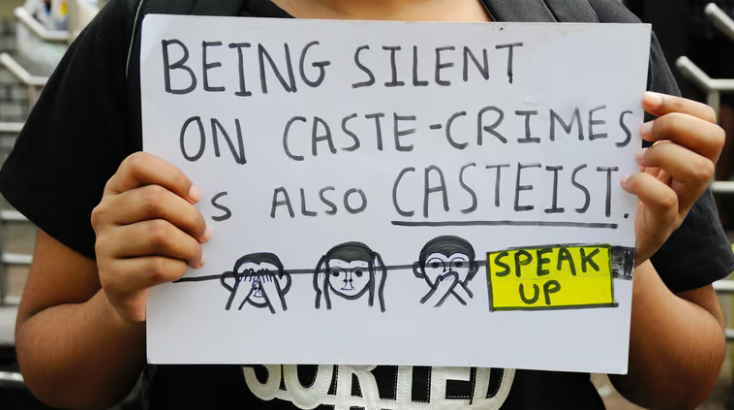Caste Bias and Segregation in Prisons: A Landmark Supreme Court Ruling (GS Paper 2, Governance)

Context
- The issue of caste-based discrimination in Indian prisons has garnered attention following a significant ruling by the Supreme Court.
- The Court has deemed such discrimination a violation of fundamental human dignity, emphasizing that no individual should face oppression based on their caste status.
Background
- The Supreme Court's investigation revealed that prison manuals in more than ten Indian states—including Uttar Pradesh, West Bengal, Odisha, Maharashtra, Tamil Nadu, and Kerala—contain provisions that not only permit but institutionalize discrimination against prisoners based on caste.
- This discrimination takes various forms, notably in the division of labor, the segregation of inmates into different barracks, and specific treatment of individuals from denotified tribes and habitual offenders.
Specific Instances of Caste-Based Segregation
- A striking example of this issue is found in Tamil Nadu's Palayamkottai Central Jail, where prisoners belonging to different castes—specifically Thevars, Nadars, and Pallars—are housed in separate sections.
- This blatant segregation reinforces harmful stereotypes and perpetuates caste-based divisions, even within the confines of a prison meant to rehabilitate rather than discriminate.
- Moreover, the practices surrounding job assignments within prisons are heavily influenced by caste and religious identities.
- Menial tasks are often allocated in ways that align with traditional caste roles, reinforcing long-standing prejudices rather than promoting equality and dignity for all inmates.
Key Points of the Ruling
In its judgment, the Supreme Court underscored several critical aspects:
- Constitutional Provisions Against Discrimination: Citing Article 15(1) of the Constitution, which protects against discrimination on various grounds, the Court emphasized that state-sponsored discrimination is a severe violation of human rights. The ruling reinforces that the state has a responsibility to uphold the dignity of all citizens, including those incarcerated.
- Untouchability as a Form of Discrimination: The Court established that discrimination among prisoners, particularly in labor allocation based on caste, amounts to untouchability. Article 17 of the Constitution explicitly prohibits such practices, and the Court's stance affirms that these traditions must be eradicated.
- Forced Labor Violations: The ruling recognized that many oppressive labor practices within prisons violate Article 23 of the Constitution, which forbids forced labor. By assigning degrading tasks based on caste, the prison system perpetuates a cycle of oppression that undermines the dignity of incarcerated individuals.
- Critique of Colonial-era Bias: The Court condemned the labeling of certain groups, particularly members of denotified and wandering tribes, as “born criminals.” This classification reflects a colonial mindset that continues to stigmatize specific communities, contributing to ongoing discrimination.
- Unconstitutionality of Ambiguous Practices: The Supreme Court ruled that any vague references to “habitual offenders” in prison manuals—without proper statutory backing—are unconstitutional. This ruling seeks to eliminate arbitrary classifications that have historically marginalized certain groups.
- Implementation of Monitoring Mechanisms: To combat these entrenched discriminatory practices, the Court mandated that district legal services authorities, along with boards of visitors established under the central model prison manual, conduct regular inspections of prisons. This oversight aims to identify and rectify instances of caste-based discrimination, ensuring accountability and adherence to constitutional values.
Implications of the Ruling
- This landmark decision has profound implications for the Indian penal system.
- It signals a shift towards a more humane approach to incarceration, prioritizing the dignity and rights of all individuals, regardless of their background.
- The ruling also highlights the need for comprehensive reforms in prison policies and practices, encouraging states to reevaluate and revise their manuals to eliminate discriminatory provisions.
- Moreover, the judgment serves as a reminder that the fight against caste discrimination extends beyond the prison walls, challenging societal norms and prejudices that continue to exist in various facets of life.
- The Supreme Court's commitment to uphold equality reinforces the idea that justice must be accessible to all, irrespective of caste or community.
Conclusion
- The Supreme Court's ruling against caste bias and segregation in prisons is a significant stride toward promoting justice and equality in India.
- By addressing these deeply rooted issues, the Court not only protects the rights of prisoners but also sets a precedent for broader societal change.
- Ensuring that the principles of dignity, equality, and justice are upheld for all individuals—especially the most marginalized—remains a critical goal in the ongoing struggle for a just society.


